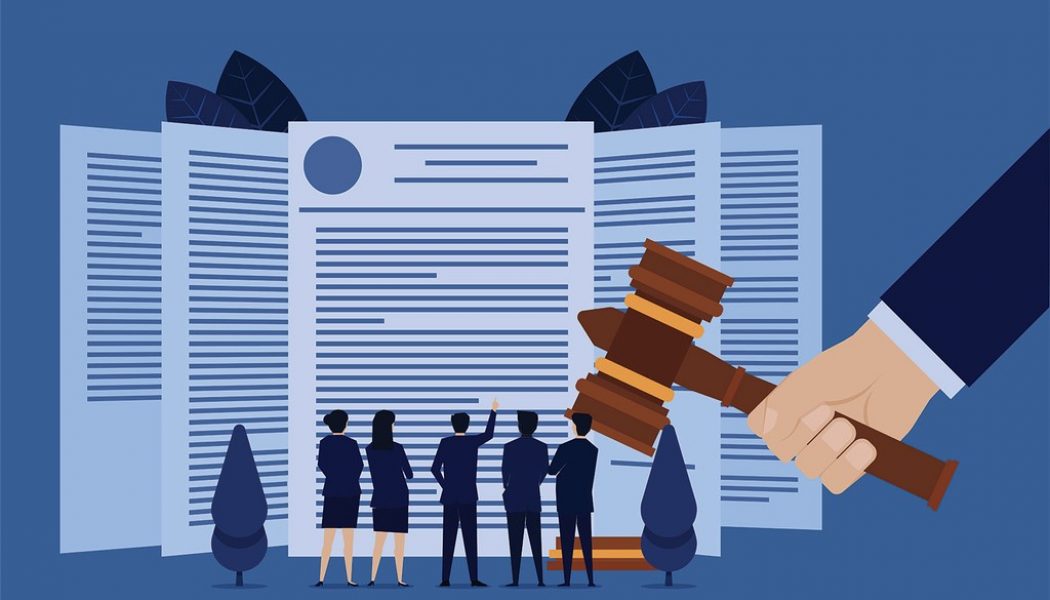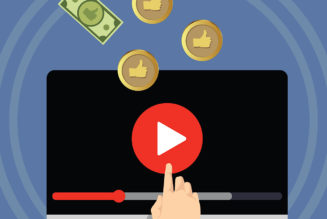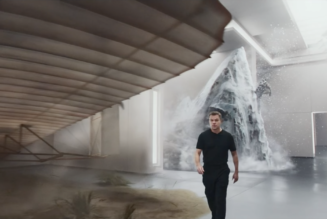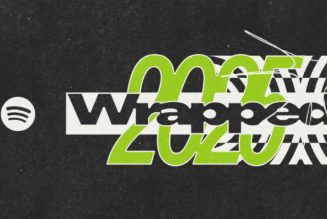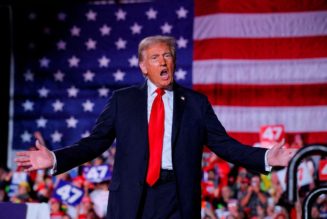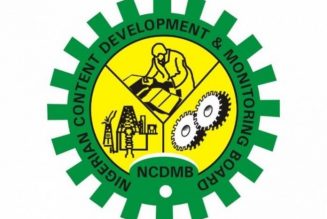The Copyright Royalty Board went too far when it eliminated a rate ceiling from digital streaming services’ calculation determining music songwriter and publishing royalties.
That’s part of the verdict from a D.C. Circuit Court of Appeals opinion that was made public Tuesday (Aug. 11), sending the CRB ruling back to the three-judge panel that made the verdict in a 2 to 1 split decision in 2018. The overall all-in music publishing royalty rate ceiling had previously been a part of the rate formula from 2008 to 2018.
But will the 44% increase in royalties stand?
It’s so far unclear. Since the DC Circuit did not specifically vacate the CRB’s ruling on the rate hike — which would increase the “headline” royalty rate incrementally from 10.5% of service’s revenue in 2018 to 15.1% through 2022 — the National Music Publishers’ Association is claiming a victory on the case’s biggest issue. But since a big part of the rate structure was thrown out, that element may still be up in the air.
The DC Circuit also took issue with the CRB changing pricing calculations on bundle offerings from its initial rate determination issued in January 2018 to its final determination in February 2019.
But even though the DC Circuit sided with these issues included in Spotify, Amazon Music, Pandora and YouTube’s appeal of the CRB rates, not all of the digital services’ complaints were validated. The DC Circuit rejected their argument that the CRB doesn’t have the right to retroactively apply rates. That’s something the CRB did when it issued its final determination in 2019, but applied it to the beginning of 2018.
The National Music Publishers’ Association’s appeal of how the rate determination allows for discounts for family and student plans discounts was also rejected.
“To be clear, the decision did not reject the top line rate increase for songwriters; rather, the D.C. Circuit Court of Appeals asked the CRB for further explanation as to why it had rejected one particular supposed benchmark,” the NMPA said in a statement. “It also asked the CRB to explain its authority for modifying ‘service revenue’ in regards to music bundles. We believe these things are easily done by the CRB.”
The DC Circuit wrote in its decision that the CRB “failed to provide adequate notice of the rate structure it adopted, failed to explain its rejection of a past settlement agreement as a benchmark for rates going forward, and never identified the source of its asserted authority to substantively redefine a material term after publishing its Initial Determination.”
Digital services appealed that CRB rate determination — which is actually based on a complex three-step formula, not just the 44% headline rate increase — in March 2019. They complained that the CRB created the rate structure by using a “mix and match approach” that took them by surprise and they they never had a chance to rebut some of the pieces incorporated into the final structure.
While the DC Circuit acknowledged that the CRB is not strictly limited to choosing from among the proposals set forth by the parties and has the authority to suggest models of its own — saying, “Some degree of deviation and combination is permissible” — it said the board deviated too far in its final outcome. “The ultimate proposal adopted by the Board has to be within a reasonable range of contemplated outcomes. Here it was not,” the DC Circuit said. “The Board’s decision went far beyond modifying or piecing together a rate structure.”
The new formula starts by setting an all-in revenue pool based on a percentage of a service’s revenue, which in the last year of the five-year term would be 15.1% of revenue. That would be measured against a pool of revenue equaling 26.2% of the royalties paid to master recording owners (i.e. record labels). The greater of the two calculations would then be the all-in pool from which publishers and songwriters are paid.
That methodology removed a semi-step in the process that had been there previously and served to set a rate cap at 80 cents per subscriber. That total was then compared to the pool based on master recording royalty payouts and the smaller of the two would be compared to the headline rate revenue percentage total. The larger of those was used as the all-in pool to determine publisher payouts.
Under that system, the total content cost was constrained by the number of paying subscribers — an important step because now if labels are able to negotiate a higher rate, the publishing pool automatically increases too.
Consequently, the DC Circuit court found, “The end result was a rate structure that could significantly increase costs for the Streaming Services, and that eliminated the prior structural protection that braced the streaming services against unregulated increases in sound recording royalties. If the Board wanted to implement such an extreme change in the rate structure, it was duty bound to give a heads up to the parties.”
“The D.C. Circuit Court of Appeals also found that incorporating an ‘uncapped Total Content Cost (TCC),’ which allows the Court to take into account free market rates negotiated by record labels, was adopted without enough evidence regarding its impact,” NMPA said in a statement. “This has nothing to do with the 44+ percent rate increase.
The DC Circuit ruling acknowledged that CRB rate determination might have been justified, saying the CRB’s “type of line-drawing and reasoned weighing of the evidence falls squarely within the Board’s wheelhouse as an expert administrative agency.” But then the CRB went too far, said the DC Circuit, because the new method “yokes the mechanical license royalties to the sound recording rights holders’ unchecked market power.”
“Worse still, the Board not only stripped away the total content cost caps, but also significantly hiked both the revenue rate and the total content cost rates the streaming services would have to pay,” the DC Circuit continued. “Therefore, the Streaming Services were not only deprived of the opportunity to voice their objections to a completely uncapped total content cost prong, they were also given no opportunity to address the interplay between that rate structure and the increased revenue and total content cost rates.”
The decision continues, “In sum, because the Copyright Royalty Board failed to provide fair notice of the rate structure it adopted, that aspect of its decision must be vacated and remanded for further proceedings. If the Board wishes to pursue its novel rate structure, it will need to reopen the evidentiary record.”
That means that the CRB will either have to shape a new rate determination from the evidence already before it, or open up the proceedings to further comment and evidence from all parties on the various issues with which the DC Circuit found fault — and rework the determination with new legal justifications for the vacated parts.
As for the DC Circuit’s issue with bundling, it noted that the change between the CRB’s initial determination from January 2018 and its final determination a year later was too dramatic, since it happened after the comment period closed — siding with the digital services. (That initial determination subtracted the pricing of the bundle deal’s other elements before passing whatever was left on to the streaming revenue pool. Under the final method, the streaming service’s piece of the bundle cost to the subscriber was calculated instead by looking at the price of comparable services.) The CRB will have to reexamine this part of the rate determination too.
But in considering some of the challenges, the DC Circuit also looked at whether the rates themselves were reasonable. In their appeal, the streaming services objected to the particular percentages adopted by the CRB to calculate revenue and total cost of content prongs. They also said the CRB ignored a benchmark established by a prior settlement from the 2011 PhonoRecords II rate setting. And they questioned whether the CRB answered the four statutory objectives when setting rates: A) maximizing the availability of creative works, (B) affording copyright owners a fair return and copyright users a fair income, (C) reflecting the relative roles of the copyright owners and users in making music available to the public, and (D) minimizing any disruption on the “structure of the industries involved and on generally prevailing industry practices.”
The services contended that the CRB’s rate increases and the conclusion they were necessary to ensure the continued viability of songwriting as a profession were unreasoned and unsupported by substantial evidence. But the DC Circuit said “that is incorrect.”
It also found that the CRB met the condition of the first statutory requirement. As for the other three statutory requirements and overall merits of the rate increase, because the DC Circuit judges vacated the rate structure, the DC Circuit said, “We need not address these arguments. Should the [CRB] on remand provide notice that it is again contemplating such a scheme, the streaming services can present their concerns to the board in the first instance.”
“We are heartened that the Court understands and supports the fact that songwriters are grossly underpaid by streaming services,” NMPA said in its statement. “It is shameful that Spotify and Amazon have now spent millions of dollars — money which could’ve been paid to songwriters — on attempting to deny them a raise based on technicalities.”
In addition to the digital services and the NMPA, indie songwriter George Johnson also appealed the ruling. His case noted that the 9.1 cents rate paid to publishers and songwriters for downloads, CDs and vinyl hadn’t been changed in more than two decades and hadn’t kept pace with inflation. Since he was the first to file an appeal, the entire appeal is now entitled George Johnson, Appellant, versus the Copyright Royalty Board and Librarian of Congress with the digital services and NMPA named as intervenors. However, all aspects of Johnson’s appeal was denied by the Appeals Court. “While thoughtfully presented, none of his arguments succeed,” the decision stated.
